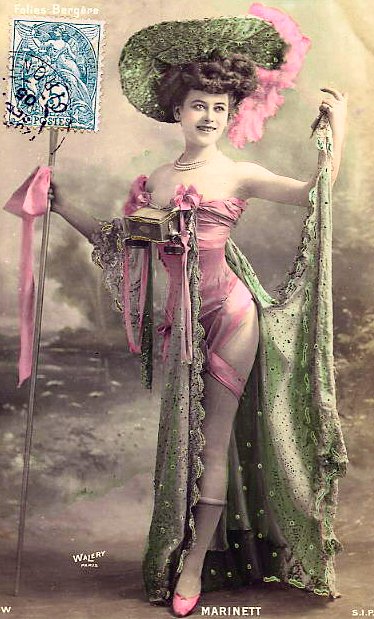|
Product Placement
Product placement, also known as embedded marketing, is a marketing technique where references to specific brands or products are incorporated into another work, such as a film or television program, with specific promotional intent. Much of this is done by loaning products, especially when expensive items, such as vehicles, are involved. In 2021, the agreements between brand owners and films and television programs were worth more than US$20 billion. While references to brands (real or fictional) may be voluntarily incorporated into works to Suspension of disbelief, maintain a feeling of realism or be a subject of commentary, product placement is the deliberate incorporation of references to a brand or product in exchange for compensation. Product placements may range from unobtrusive appearances within an environment, to prominent integration and acknowledgement of the product within the work. Common categories of products used for placements include automobiles and consumer ... [...More Info...] [...Related Items...] OR: [Wikipedia] [Google] [Baidu] |
Rolls-Royce Silver Shadow II (The World Is Not Enough) Right National Motor Museum, Beaulieu
The Rolls-Royce Silver Shadow and its slightly stretched version, the Rolls-Royce Silver Wraith II, are full-size luxury cars produced by British automaker Rolls-Royce car, Rolls-Royce in various forms from 1965 to 1980. It was the first of the marque to use Ponton (car), fully slabsided unibody, unitary body and chassis construction, as well as all-around independent suspension. Two-door versions were initially, between 1965 and 1971, sold as the Rolls-Royce Silver Shadow 2-door saloon and the Silver Shadow Drophead Coupé, before they became the Rolls-Royce Corniche Coupé and Convertible, respectively. The Silver Shadow was produced from 1965 to 1976, and the Silver Shadow II from 1977 to 1980. The combined model run was 30,057 cars manufactured; James May reported it in 2014 as the largest production volume of any Rolls-Royce model. A Bentley-badged version, the Bentley T-series, T-series, was produced from 1965 through 1980 in 2,336 examples. Models Silver Shadow The Sil ... [...More Info...] [...Related Items...] OR: [Wikipedia] [Google] [Baidu] |
Corporate Synergy
Corporate synergy is a financial benefit that a corporation expects to realize when it merges with or acquires another corporation. Corporate synergy occurs when corporations interact congruently with one another, creating additional value. Synergies are divided into two groups: operational (revenue enhancement and cost reduction) and financial (decrease in cost of capital, tax benefits). Seeking for synergies is a nearly ubiquitous feature and motivation of corporate mergers and acquisitions and is an important negotiating point between the buyer and seller that impacts the final price both parties agree to; see . The synergy value should not be confused with the control premium; these metrics should be calculated separately. Positive synergies arise when the combined corporation will bring about better results than the two independent corporations, as in the saying "the whole is better than the sum of the parts". If the corporations do not do due diligence, negative synergie ... [...More Info...] [...Related Items...] OR: [Wikipedia] [Google] [Baidu] |
Actuality Film
Actuality film is a non-fiction film genre that uses footage of real events, places, and things (essentially B-roll), a predecessor to documentary film. Unlike documentaries, actuality films are not structured into a larger narrative or coherent whole. During the era of early cinema, actualities—usually lasting no more than a minute or two and usually assembled together into a program by an exhibitor—were just as popular and prominent as their fictional counterparts. The line between "fact" and "fiction" was not as prominent in early cinema as it would become once documentaries became the predominant non-fiction filmmaking form. Actuality as a film genre is related to still photography. Although actuality films largely ceased production around 1908, the term "actuality footage" is sometimes used in documentary production to refer to the raw footage. Beginnings The first actuality films date to the inception of projected cinema. The Lumière Brothers, in France, were the p ... [...More Info...] [...Related Items...] OR: [Wikipedia] [Google] [Baidu] |
Die Woche
' (, 'The Week') was an illustrated weekly newspaper published in Berlin from 1899 to 1944. Overview ''Die Woche'' reported on popular entertainment, including "sensationalist crime stories", and covered celebrities in sports and show business. Its publisher was newspaper magnate August Scherl, who also owned the ''Berliner Lokal-Anzeiger'', a Berlin paper. By 1916, Scherl had been bought out by the (politically conservative) Hugenberg Press, and ' came to play a part in the politics of the day, specifically in promoting an image of Paul von Hindenburg Paul Ludwig Hans Anton von Beneckendorff und von Hindenburg (2 October 1847 – 2 August 1934) was a German military and political leader who led the Imperial German Army during the First World War and later became President of Germany (1919� ... as both a military man and a civilian, aiding his appeal across the German population. A Turkish weekly magazine, '' Yedigün'', was inspired by . Between 1993 and 2002, the ti ... [...More Info...] [...Related Items...] OR: [Wikipedia] [Google] [Baidu] |
Johanna Schaffgotsch Liest Die Woche CloseUp
Johanna is a feminine name, a variant form of Joanna that originated in Latin in the Middle Ages, including an -h- by analogy with the Latin masculine name Johannes. The original Greek form ''Iōanna'' lacks a medial /h/ because in Greek /h/ could only occur initially. For more information on the name's origin, see the article on Joanna. Women named Johanna *Johanna Allik (born 1994), Estonian figure skater * Johanna van Ammers-Küller (1884–1966), Dutch writer * Johanna "Hannah" Arendt (1906–1975), German-born American political theorist * Johanna "Jo" Bauer-Stumpff (1873–1964), Dutch painter * Johanna Sophia of Bavaria (c.1373–1410), Duchess consort of Austria * Johanna Beisteiner (born 1976), Austrian classical guitarist * Johanna Berglind (1816–1903), Swedish sign language educator * Jóhanna Bergmann Þorvaldsdóttir, Icelandic farmer * Johanna Bond, American law professor and academic administrator * Johanna "Annie" Bos (1886–1975), Dutch theater and silent film ... [...More Info...] [...Related Items...] OR: [Wikipedia] [Google] [Baidu] |
Sunlight (cleaning Product)
Sunlight is a brand of laundry soap, laundry detergent and dishwashing detergent manufactured and marketed around the world by Unilever, except in the United States and Canada, where it has been owned by Sun Products (now Henkel Corporation) since 2010. History Sunlight household soap was introduced by the British company Lever Brothers in 1884. It was the world's first packaged, branded laundry soap. Designed for washing clothes and general household use, the success of the product led to the name of the company's village for its workers, Port Sunlight. The soap formula was invented by a Bolton chemist named William Hough Watson, who also became an early business partner. Watson's process created a new soap, using glycerin and vegetable oils such as palm oil rather than tallow (animal fats). William Lever and his brother James Darcy Lever invested in Watson's soap invention and its initial success came from offering bars of cut, wrapped, and branded soap in his father's g ... [...More Info...] [...Related Items...] OR: [Wikipedia] [Google] [Baidu] |
Lever Brothers
Lever Brothers was a British manufacturing company founded in 1885 by two brothers: William Lever, 1st Viscount Leverhulme, William Hesketh Lever, 1st Viscount Leverhulme (1851–1925), and James Darcy Lever (1854–1916). They invested in and successfully promoted a new soap-making process invented by chemist William Hough Watson. Lever Brothers entered the United States market in 1895 and acquired Mac Fisheries, owner of Wall's (meat), T. Wall & Sons, in 1925. Its brands included Lifebuoy (soap), Lifebuoy, Lux (soap), Lux and Vim (cleaning product), Vim. Lever Brothers merged with Margarine Unie to form Unilever in 1929. History Starting with a small grocery business begun by his father, William Lever, 1st Viscount Leverhulme, William Lever and his brother James entered the soap business in 1885 by buying a small soap works in Warrington. The brothers teamed up with a Cumbrian chemist, William Hough Watson, who became an early business partner. Watson invented the process whic ... [...More Info...] [...Related Items...] OR: [Wikipedia] [Google] [Baidu] |
Auguste And Louis Lumière
The Lumière brothers (, ; ), Auguste Marie Louis Nicolas Lumière (19 October 1862 – 10 April 1954) and Louis Jean Lumière (5 October 1864 – 6 June 1948), were French manufacturers of photography equipment, best known for their ' motion picture system and the short films they produced between 1895 and 1905, which places them among the earliest filmmakers. Their screening of a single film on 22 March 1895, for around 200 members of the Société d'encouragement pour l'industrie nationale (Society for the Development of the National Industry) in Paris was probably the first presentation of projected film. Their first commercial public screening on 28 December 1895, for around 40 paying visitors and invited relations has traditionally been regarded as the birth of cinema. Either the techniques or the business models of earlier filmmakers proved to be less viable than the breakthrough presentations of the Lumières. History The Lumière brothers were born in Besançon, ... [...More Info...] [...Related Items...] OR: [Wikipedia] [Google] [Baidu] |
Folies Bergère
150px, Stanisław Julian Ignacy Ostroróg">Walery, 1927 The Folies Bergère () is a cabaret music hall in Paris, France. Located at 32 Rue Richer in the 9th Arrondissement, the Folies Bergère was built as an opera house by the architect Plumeret. It opened on 2 May 1869 as the Folies Trévise, with light entertainment including operettas, comic opera, popular songs, and gymnastics. It became the Folies Bergère on 13 September 1872, named after nearby Rue Bergère. The house was at the height of its fame and popularity from the 1890s' ''Belle Époque'' through the 1920s. Revues featured extravagant costumes, sets and effects, and often nude women. In 1926, Josephine Baker, an African-American expatriate singer, dancer and entertainer, caused a sensation at the Folies Bergère by dancing in a costume consisting of a skirt made of a string of artificial bananas and little else. The institution is still in business, and is still a strong symbol of French and Parisia ... [...More Info...] [...Related Items...] OR: [Wikipedia] [Google] [Baidu] |
Oxford Worlds Classics
Oxford World's Classics is an imprint of Oxford University Press. First established in 1901 by Grant Richards and purchased by OUP in 1906, this imprint publishes primarily dramatic and classic literature for students and the general public. Its competitors include Penguin Classics, Everyman's Library, and the Modern Library. Most titles include critical apparatus – usually, an introduction, bibliography, chronology, and explanatory notes – as is the case with Penguin Classics. History Grant Richards The World's Classics imprint was created by London publisher Grant Richards in 1901. Richards had an "ambitious publishing programme", and this ambition led to the liquidation of Grant Richards in 1905. Henry Frowde, manager of the Oxford University Press, purchased the series in October 1905. The Oxford World's Classics were classed as "the most famous works of the English Language" and many volumes contained introductions by distinguished authors, such as T. S. Eliot and ... [...More Info...] [...Related Items...] OR: [Wikipedia] [Google] [Baidu] |
Around The World In Eighty Days (novel)
''Around the World in Eighty Days'' () is an adventure novel by the French writer Jules Verne, first published in French in 1872. In the story, Phileas Fogg of London and his newly employed French valet Passepartout attempt to circumnavigate the world in 80 days on a wager of £20,000 (equivalent to £ million in ) set by his friends at the Reform Club. It is one of Verne's most acclaimed works. Plot Phileas Fogg is a wealthy English gentleman living a solitary life in London. Despite his wealth, Fogg lives modestly and carries out his habits with mathematical precision. He is a member of the Reform Club, where he spends a large portion of his days and nights. On the morning of 2 October 1872, having dismissed his valet for bringing him shaving water at a temperature slightly lower than expected, Fogg hires Frenchman Jean Passepartout as a replacement. That evening, while at the Club, Fogg gets involved in a discussion regarding an article in ''The Morning Chronicle'' ( ... [...More Info...] [...Related Items...] OR: [Wikipedia] [Google] [Baidu] |
Jules Verne
Jules Gabriel Verne (;''Longman Pronunciation Dictionary''. ; 8 February 1828 – 24 March 1905) was a French novelist, poet and playwright. His collaboration with the publisher Pierre-Jules Hetzel led to the creation of the ''Voyages extraordinaires'', a series of bestselling adventure novels including ''Journey to the Center of the Earth'' (1864), ''Twenty Thousand Leagues Under the Seas'' (1870), and ''Around the World in Eighty Days'' (1872). His novels are generally set in the second half of the 19th century, taking into account contemporary scientific knowledge and the technological advances of the time. In addition to his novels, he wrote numerous plays, short stories, autobiographical accounts, poetry, songs, and scientific, artistic and literary studies. His work has been adapted for film and television since the beginning of cinema, as well as for comic books, theater, opera, music and video games. Verne is considered to be an important author in France and most of ... [...More Info...] [...Related Items...] OR: [Wikipedia] [Google] [Baidu] |







